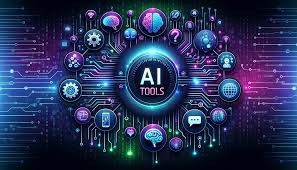The rise of artificial intelligence in content creation has sparked countless debates about the future of copywriting. Will AI replace human writers? Should businesses invest in AI tools or stick with traditional copywriters? These questions miss a fundamental truth: the most powerful approach combines both AI capabilities and human expertise to create content that truly converts.
Rather than viewing AI as a threat or a complete solution, forward-thinking businesses are discovering that the synergy between artificial intelligence and human creativity produces results neither could achieve alone. This collaboration isn’t about replacement—it’s about augmentation, efficiency, and unlocking new levels of performance in content marketing.
The Complementary Strengths
AI and human copywriters bring distinct advantages to the table. Understanding these strengths reveals why collaboration beats competition every time.
AI excels at processing vast amounts of data, identifying patterns, and generating content at scale. It can analyze thousands of high-performing headlines in seconds, suggest variations based on proven formulas, and produce first drafts faster than any human. AI tools can optimize content for search engines, check readability scores, and even predict which phrases might resonate with specific audiences based on historical data.
Human copywriters, meanwhile, bring irreplaceable qualities to content creation. They understand nuance, context, and emotional resonance in ways that current AI simply cannot replicate. Humans grasp cultural sensitivities, can pivot strategies based on subtle market shifts, and inject authentic personality into brand voices. They ask the critical questions that shape strategy: Who is this really for? What problem keeps them awake at night? What story will move them to action?
A Practical Workflow for Collaboration
The most effective teams have developed workflows that leverage both AI and human strengths throughout the content creation process. This isn’t about using AI as a simple writing assistant—it’s about strategic integration at every stage.
The research phase benefits enormously from AI capabilities. Tools can quickly aggregate competitor content, identify trending topics, and surface relevant keywords. They can analyze what’s working in your industry and present data-driven insights in minutes. Human copywriters then interpret this information through the lens of brand strategy and audience psychology, deciding which opportunities align with business goals.
During ideation, AI can generate dozens of headline options, angle variations, and content structures based on proven frameworks. Rather than staring at a blank page, copywriters start with raw material to refine. They select the most promising concepts, combine ideas in unexpected ways, and add the creative spark that transforms a good idea into a compelling one.
The drafting stage is where collaboration becomes most dynamic. Some writers use AI to create detailed outlines or rough first drafts, which they then substantially rewrite and enhance. Others prefer to write their own drafts and use AI for expansion, suggesting where additional detail or examples might strengthen arguments. There’s no single right approach—the key is finding what amplifies your particular strengths.
Quality Control and Optimization
Here’s where human judgment becomes absolutely critical. AI-generated content, even when polished, often lacks the subtle qualities that separate adequate content from high-converting copy. It might be grammatically perfect yet somehow lifeless. It could hit all the SEO requirements while missing the emotional core that drives action.
Human copywriters serve as quality gatekeepers, ensuring that every piece of content meets brand standards and actually serves its purpose. They catch the awkward phrasings AI sometimes produces, the logical gaps that slip through, and the tonal inconsistencies that undermine credibility. They verify that claims are accurate, examples are relevant, and the overall piece tells a coherent story.
This editing phase is also where humans inject personality and polish. They might add anecdotes, adjust pacing, or restructure sections for better flow. They ensure the content sounds like it comes from a real person speaking to another real person—not a machine processing language patterns.
Data-Driven Refinement
After publication, AI once again proves invaluable for performance analysis. Tools can track engagement metrics, conversion rates, and audience behavior patterns across dozens or hundreds of content pieces simultaneously. They can identify which headlines, calls-to-action, or content formats perform best with different audience segments.
Human copywriters use these insights to inform future strategy. They spot trends that might not be immediately obvious in raw data, like how certain emotional appeals resonate during specific seasons or how audience preferences are gradually shifting. They make strategic decisions about what to create more of, what to retire, and how to evolve the content approach over time.
Building Sustainable Competitive Advantage
Companies that master AI-human collaboration gain significant advantages over competitors relying solely on one or the other. They produce more content without sacrificing quality. They test and iterate faster. They maintain consistent brand voices while scaling output. They free human creativity for high-impact work rather than routine tasks.
This collaboration also helps businesses stay adaptable. As AI tools improve, teams experienced in leveraging them can quickly adopt new capabilities. As market conditions shift, human strategists can redirect AI resources toward emerging opportunities. The combination creates organizational agility that pure AI or pure human approaches cannot match.
The Path Forward
The question isn’t whether to use AI or human copywriters—it’s how to combine them most effectively for your specific needs. Start by identifying which tasks drain creative energy without adding value. Use AI to handle those efficiency bottlenecks. Invest human expertise where judgment, strategy, and emotional intelligence matter most.
Remember that high-converting content isn’t just well-written—it’s strategically sound, audience-focused, and genuinely valuable. It requires both the analytical power of AI and the creative intuition of human experts. The teams producing tomorrow’s most effective content won’t be those who chose between these tools. They’ll be the ones who learned to orchestrate them into something greater than either could achieve alone.
The future of copywriting isn’t human versus machine. It’s human and machine, working together to create content that truly connects, persuades, and converts.


